This post may contain affiliate links. Please see our disclosure policy.
Syrups for canning fruit give you the best neutral flavor, and bring out the natural sweetness in your fruit preserves.
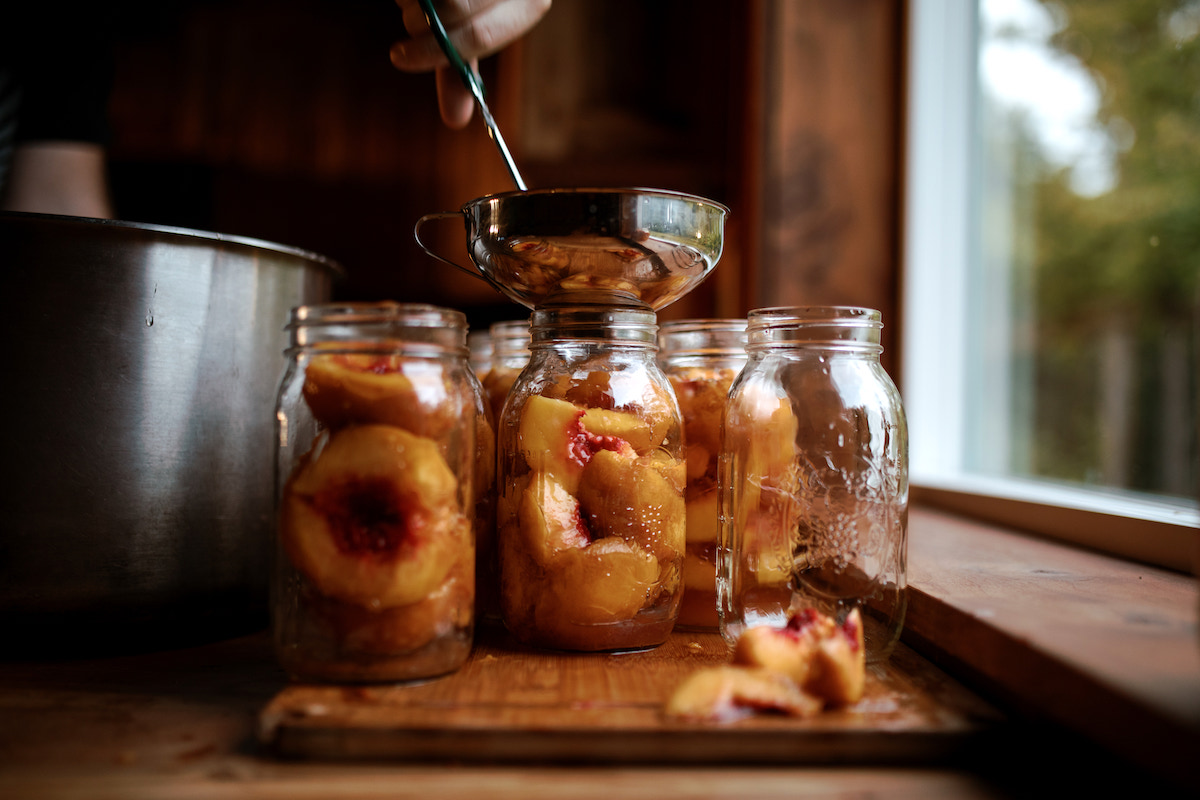
Canning fruit in a simple syrup of sugar and water is a great way to preserve the flavor, color, and texture of the original fruit. Fruit canned in water can taste washed out, but even a small amount of sugar can help retain the flavor, color, and texture of the original fresh fruit.
It can be a challenge to figure out how much sugar you need for a canner batch of home-canned fruit, but there’s a simple table that will give you easy-to-read measurements for each type of syrup.
The sugar measurements for both standard 9-pint and 7-quart canner batches are listed below:

If you’re more of a text-based learner, here are the measurements written out:
For a 9-Pint Canner Batch, you’ll need the following amounts:
- Extra-light syrup: 3/4 cups sugar to 6 1/2 cups water
- Light syrup: 1 1/2 cups sugar to 5 3/4 cups water
- Medium syrup: 2 1/4 cups sugar to 5 1/4 cups water
- Heavy syrup: 3 1/4 cups sugar to 5 cups water
- Extra-Heavy Syrup: 4 1/4 cups sugar to 4 1/4 cups water
For a 7-Quart Canner Batch, you’ll need the following amounts:
- Extra-light syrup: 1 1/4 cups sugar to 10 1/2 cups water
- Light syrup: 2 1/4 cups sugar to 9 cups water
- Medium syrup: 3 3/4 cups sugar to 8 1/4 cups water
- Heavy syrup: 5 1/4 cups sugar to 7 3/4 cups water
- Extra-Heavy Syrup: 6 3/4 cups sugar to 6 1/2 cups water
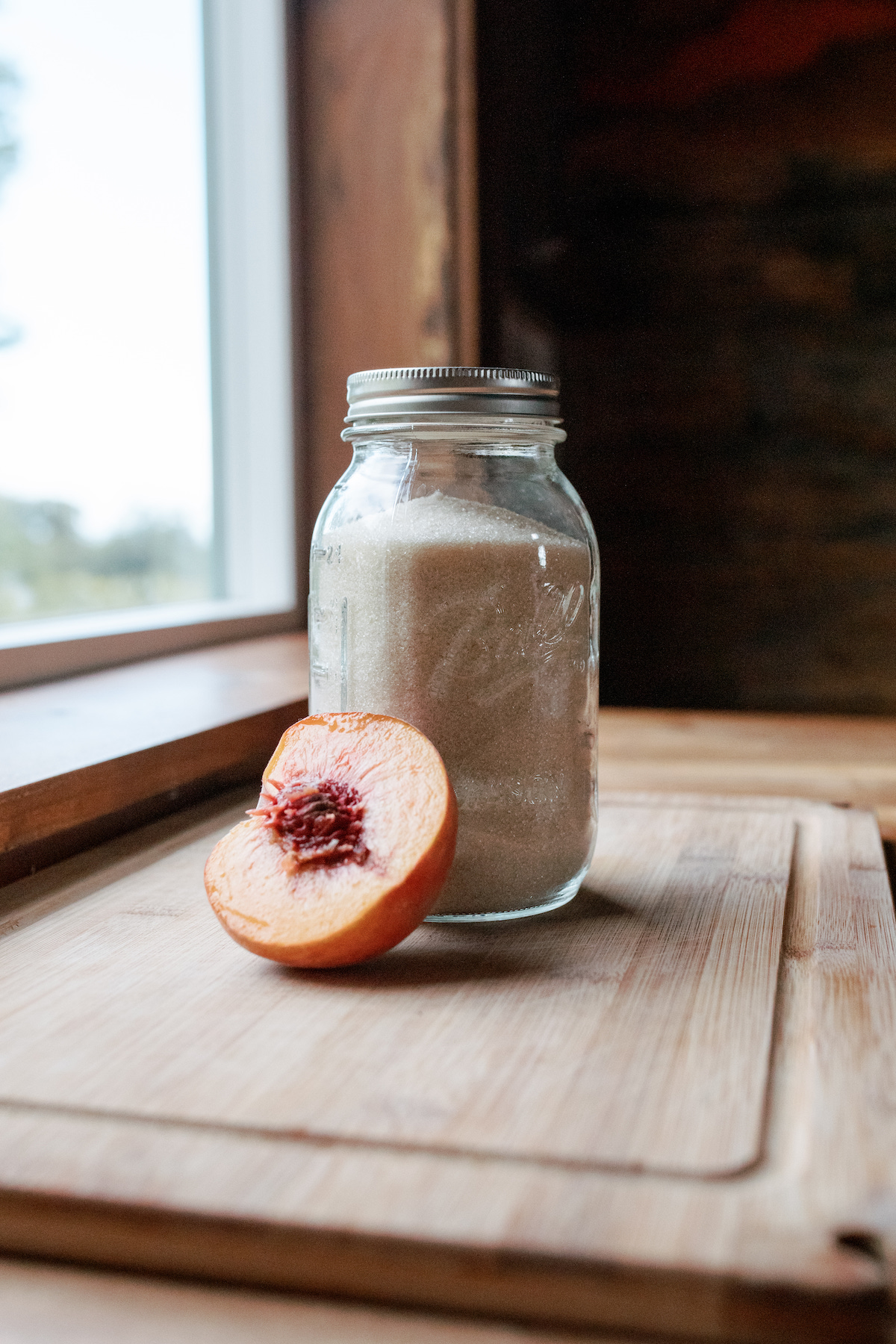
How to Make Syrup for Canning Fruit
To make syrups for canning fruit, first, you need to decide on the type of syrup you’re using (from extra light to extra heavy).
Next, choose the appropriate amounts from the table above, and mix the water and sugar together in a saucepan. Stir until the sugar is dissolved and the mixture is at a full rolling boil.
For raw pack, pour the sugar syrup over the fruit in your canning jars.
For hot pack, add the fruit to the boiling syrup and return the mixture to a boil for the amount of time specified by your recipe (usually just a minute or two).
Fill the jars, leaving the recommended headspace (usually 1/2 inch for canning fruit).
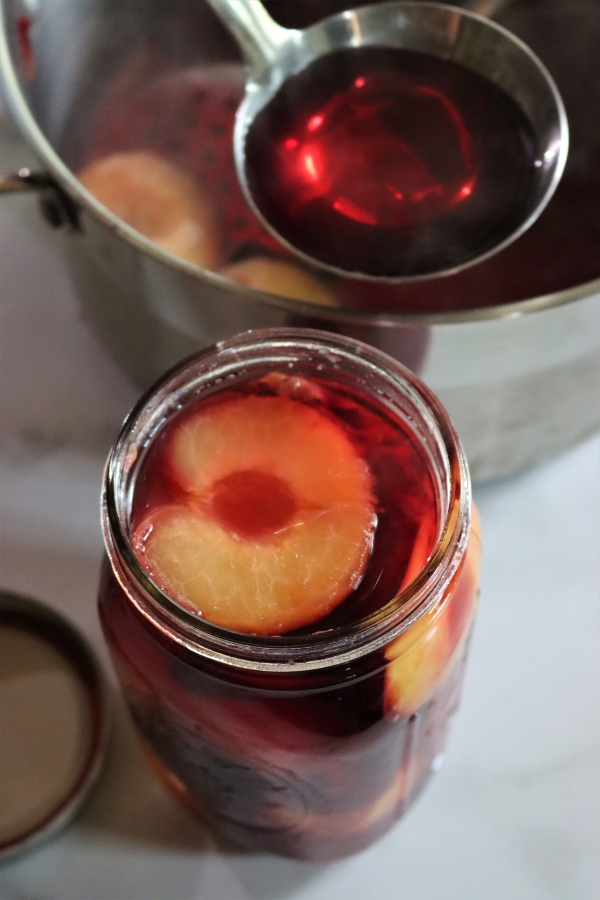
Recommended Syrups for Preserving Fruit
The type of syrup to use depends on your own personal taste, as well as the type of fruit you’re preserving.
Personally, I like to use extra light syrup because it approximates the natural sugar in the fruit. If you can in plain water, the flavor (and natural sugar) in the fruit washes out into the canning liquid. However, if you can add extra light syrup, it has about the same amount of sugar as the fruit itself, so they’re in balance. The fruit doesn’t get sweeter, but it doesn’t lose sweetness either.
I think it gives you the freshest, most fruit-forward flavor.
Since extra light syrup doesn’t add much sweetness, many people don’t like it for very tart fruits (like gooseberries or sour cherries). And, some people just prefer sweeter home canned fruit. It’s all up to your personal tastes.
(These syrups also work for canning vegetables that are preserved like fruits, like when canning rhubarb, as well as pressure-canned sweet potatoes and canning pumpkin.)
These are the recommendations given by the National Center for Home Food Preservation for the best syrup for various types of home-canned fruit:
Extra Light Syrup
Perfect for sweet fruits, or for when you’re trying to can fruit as close to their natural flavor as possible. Obviously, with less sugar, this is the lowest-calorie option.
I like to use this for most of my fruit canning recipes, especially with sweet fruits like peaches and pears. That said, the NCHFP simply labels this as the “low calorie” or “natural” option and they don’t make any specific fruit recommendations.
I especially like it when I’m canning oranges or canning pineapple, as it really lets their light tropical flavor shine through. It’s also great when canning grapes, especially those super sweet green grapes.
Light Syrup
The National Center for Food preservation recommends this syrup for the “sweetest fruits.” But they also note that if you’re used to commercially canned fruit, you should try it first to see if your family likes it.
Light syrup is a good choice for canning peaches and canning apricots, and lighter batches when you’re canning figs (though some people prefer their figs to taste more candied out of a jar).
While I like extra light for oranges, I use light for canning grapefruit because they’re more tart (though many people go with medium).
Medium Syrup
This is what they use commercially for the sweetest fruits like sweet apples, sweet cherries, berries, and grapes. It’s quite sweet, and it’s what I use for tart fruits, so adjust to your own tastes.
The National Center for Food Preservation recommends it for canning apple slices, canning cherries, and in berry canning recipes, like canning raspberries and canning blueberries.
Heavy Syrup
It is used most commonly with tart fruits like tart crabapples, sour cherries, gooseberries, and cranberries.
I think it’s a great choice for cranberries, which are wonderful with an almost candy like flavor. Same goes for canning crabapples and canning gooseberries. (I stick to lighter syrups for canning cherries, even sour cherries.)
Extra Heavy Syrup
This makes somewhat candied fruits, like maraschino cherries. The fruit texture changes and hardens somewhat when you get to extra heavy syrup, and even people used to commercially canned fruit will find this a bit over the top for most uses.
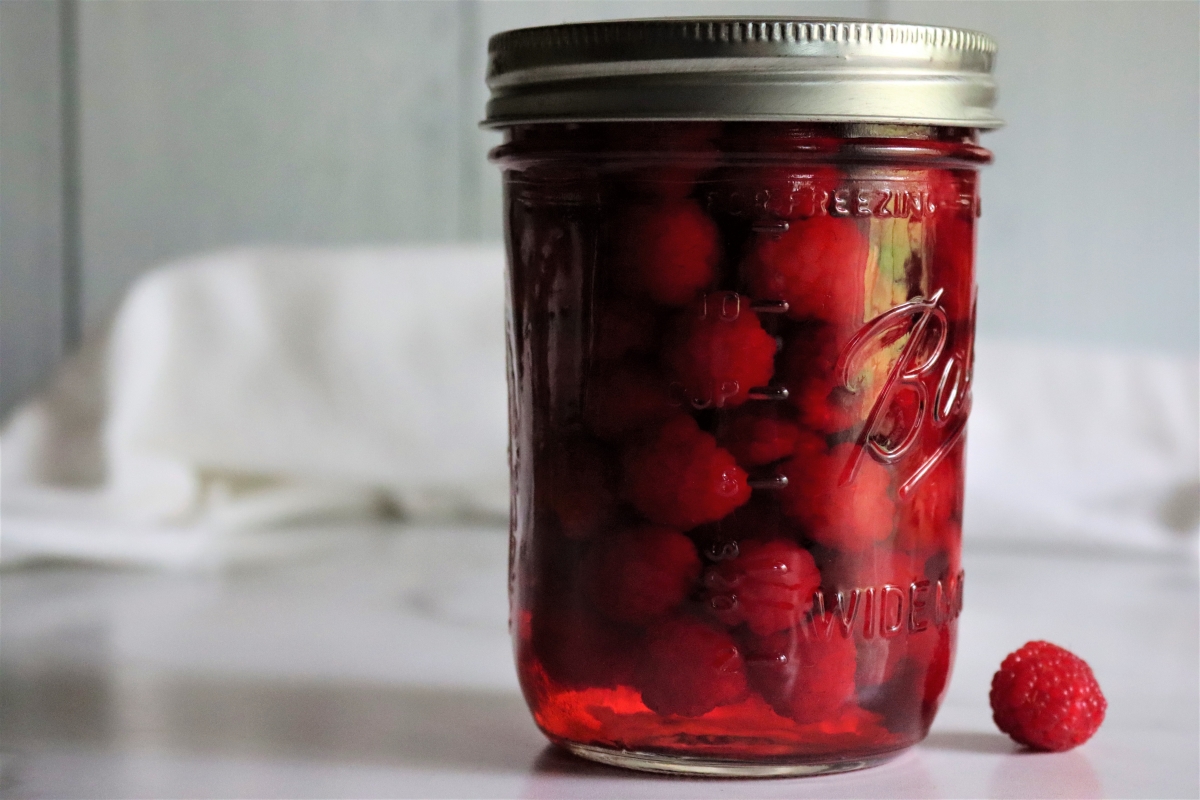
Alternative Sweeteners
If you’re avoiding refined cane sugar, you can use alternative sweeteners like honey, maple syrup or agave in place of sugar. Those taste sweeter than cane sugar, and most sources recommend replacing a cup of sugar with 2/3 to 3/4 cup of honey.
I’d suggest choosing a light honey, like a clover honey, or a light maple syrup (grade A extra fancy), as darker grades will change the flavor of your home canned fruits.
Most modern calorie-free sweeteners haven’t been specifically tested for canning, and though many people do use them, I can’t comment on their safety or appropriateness for home canning recipes. This includes things like Splenda, swerve, and Monkfruit.
At this point, most people assume they’re “probably fine,” but there hasn’t been any true testing to date to verify that. Most of them do impact the flavor of home canned goods, and some aren’t great when heated (like sweet-n-low).
If you’re trying to avoid sugar, I’d suggest canning fruit in water or fruit juice, and white grape juice is one of the best choices for minimizing processed sugar while still keeping good flavor in home canned goods.
Fruit Canning Recipes
Now that you know how to make a sugar syrup for canning fruit, try it out with any of these fruit canning recipes:
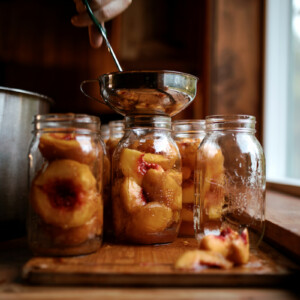
Syrups for Canning Fruit
Ingredients
Extra Light Syrup
- 3/4 cup sugar, for 9 pint batch, or 1 1/4 cups for 7 quart batch
- 6 1/2 cups water, for 9 pint batch, or 10 1/2 cups water for a 7 quart batch
Light Syrup
- 1 1/2 cups sugar, for 9 pint batch, or 2 1/4 cups for 7 quart batch
- 5 3/4 cups water, for 9 pint batch, or 9 cups water for a 7 quart batch
Medium Syrup
- 2 1/4 cups sugar, for 9 pint batch, or 3 3/4 cups for 7 quart batch
- 5 1/4 cups water, for 9 pint batch, or 8 1/4 cups water for a 7 quart batch
Heavy Syrup
- 3 1/4 cups sugar, for 9 pint batch, or 5 1/4 cups for 7 quart batch
- 5 cups water, for 9 pint batch, or 7 3/4 cups water for a 7 quart batch
Extra Heavy Syrup
- 4 1/4 cups sugar, for 9 pint batch, or 6 3/4 cups for 7 quart batch
- 4 1/4 cups water, for 9 pint batch, or 6 1/2 cups water for a 7 quart batch
Instructions
- Choose your syrup strength and batch size from the lists above. This recipe is designed such that you choose your syrup strength and batch size (ie Light Syrup for Pints) for a tested fruit canning recipe. Don't use all the quantities above combined.
- Combine the measured sugar and water in a saucepan. Heat, stirring, until the sugar dissolves; bring to a full rolling boil.
- For Raw Pack: Pack prepared fruit into hot jars. Ladle boiling syrup over fruit, leaving 1/2 inch headspace unless your recipe states otherwise.
- For Hot Pack: Add prepared fruit to the boiling syrup; return to a boil for the time specified by your fruit recipe (often 1–2 minutes). Pack fruit and syrup into hot jars, leaving 1/2 inch headspace.
- Remove air bubbles, adjust headspace, wipe rims, apply lids and bands.
- Process jars according to your specific fruit recipe, including altitude adjustments.
Notes
Recommended Syrup Use by Fruit (Quick Guide)
• Extra-Light or Light: sweetest fruits or when you want a very natural, fruit-forward flavor. (~10% sugar for extra light, or ~ 20% for light)• Medium: commonly used commercially for sweet apples, sweet cherries, berries, grapes. (~30% sugar)
• Heavy: helpful for tarter fruits such as tart apples, apricots, sour cherries, gooseberries, nectarines, peaches, pears, plums. (~40% sugar)
• Extra-Heavy: very sweet, firming effect; use sparingly for making candy. (~50% sugar)
Variations
• Alternative sweeteners: You can substitute honey, light maple syrup, or agave for part or all of the sugar. Most sources suggest 2/3 to 3/4 cup liquid honey per 1 cup sugar. Choose light, mild sweeteners (e.g., clover honey, Grade A golden maple) to keep the fruit flavor front and center.• No-sugar options: Use water or 100% fruit juice (white grape juice is a good neutral choice). Expect a less sweet result; flavor remains brighter than plain water alone.
• Modern calorie-free sweeteners (e.g., sucralose, monkfruit blends) haven’t been comprehensively tested for canning quality; many people use them, but heat stability and flavor can vary. If avoiding sugar, fruit juice is a reliable alternative.
• Make-ahead: Extra syrup can be refrigerated up to 1 week or frozen for later batches.
• Non-Fruit Preserves: These syrups also work for “fruit-style” vegetables like rhubarb, and for pressure-canned sweet potatoes or pumpkin cubes when a sweet pack is desired; always follow the tested recipe for the specific food.
Nutrition
Nutrition information is automatically calculated, so should only be used as an approximation.
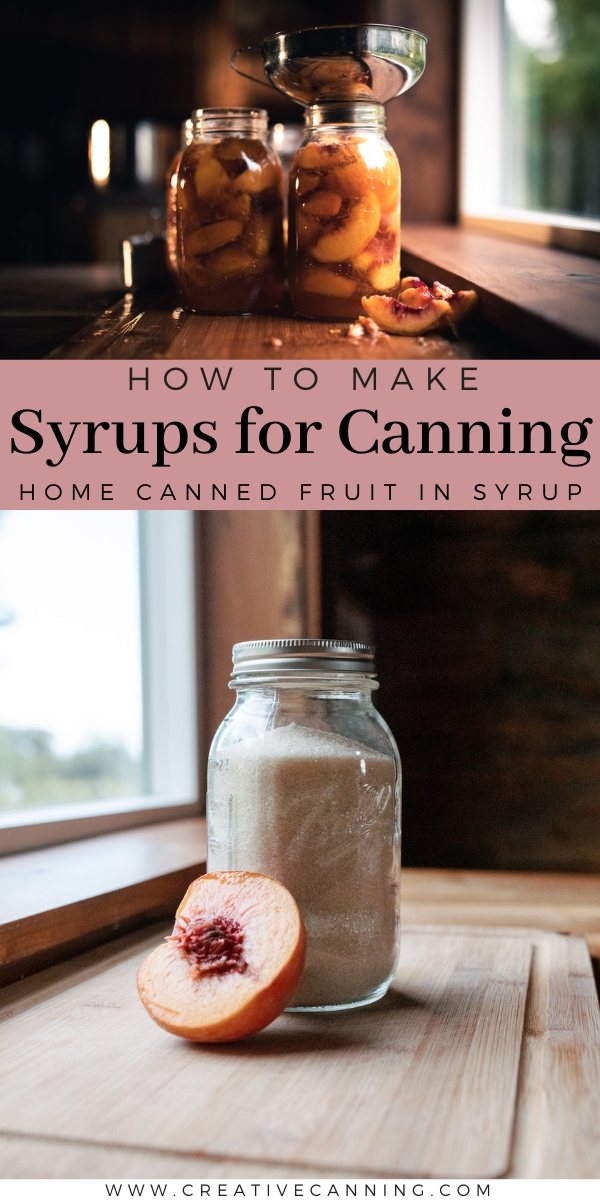
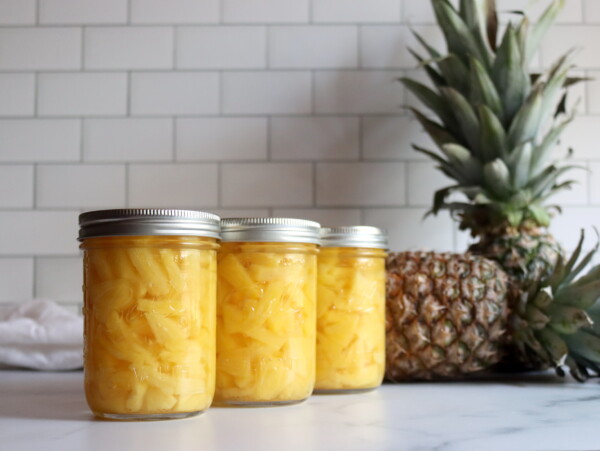
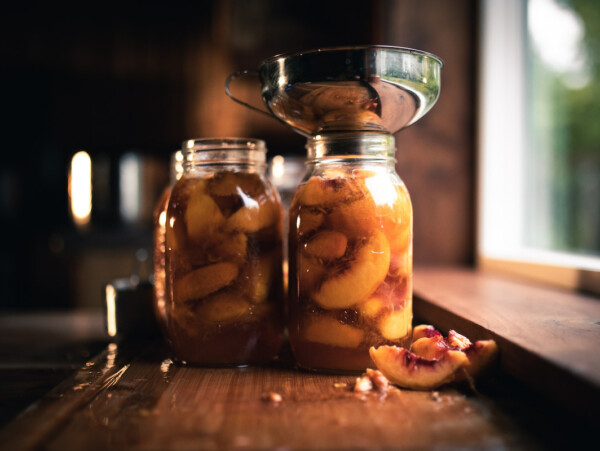
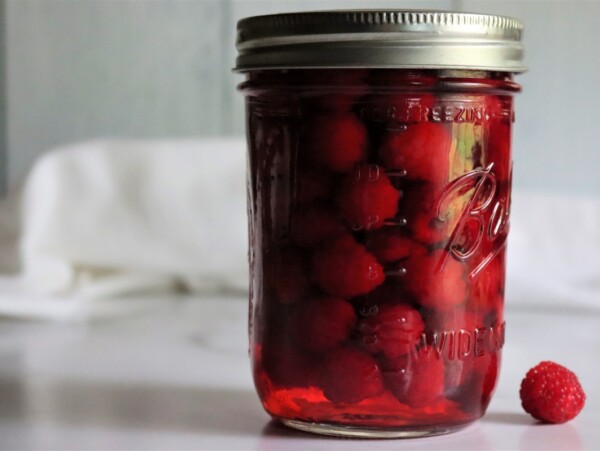
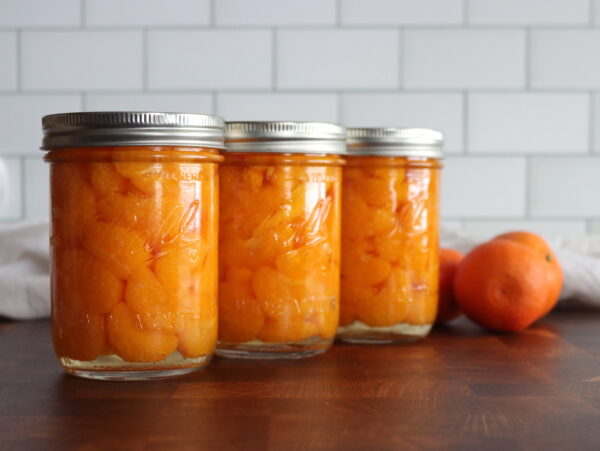
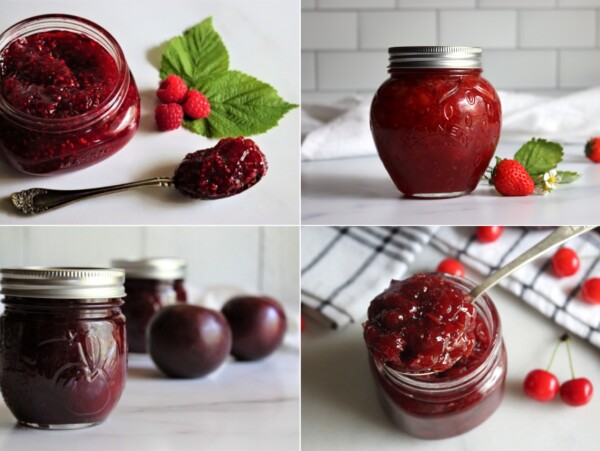
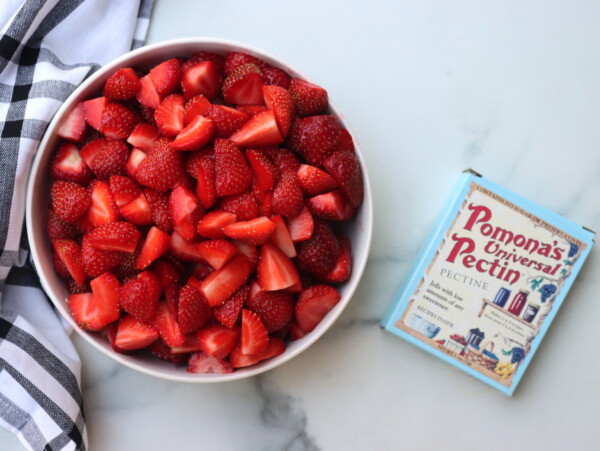
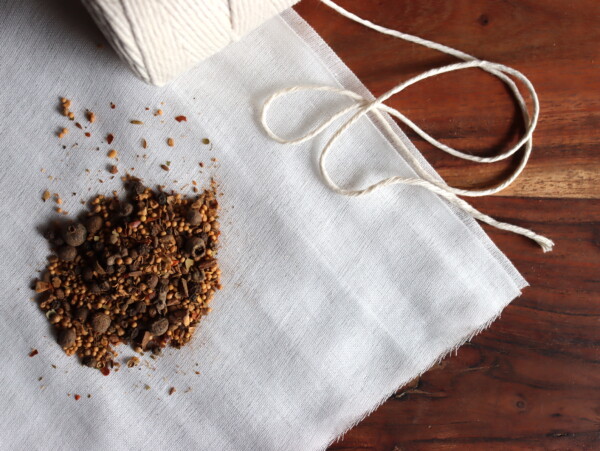
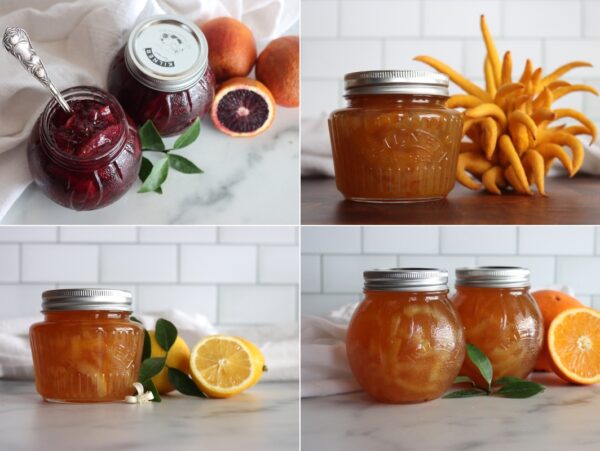
Thank you. You give great instructions and measurements.
So glad it’s helpful to you!
My family usually uses extra light syrup, but all the measurements are here so you can make whatever suits your needs.